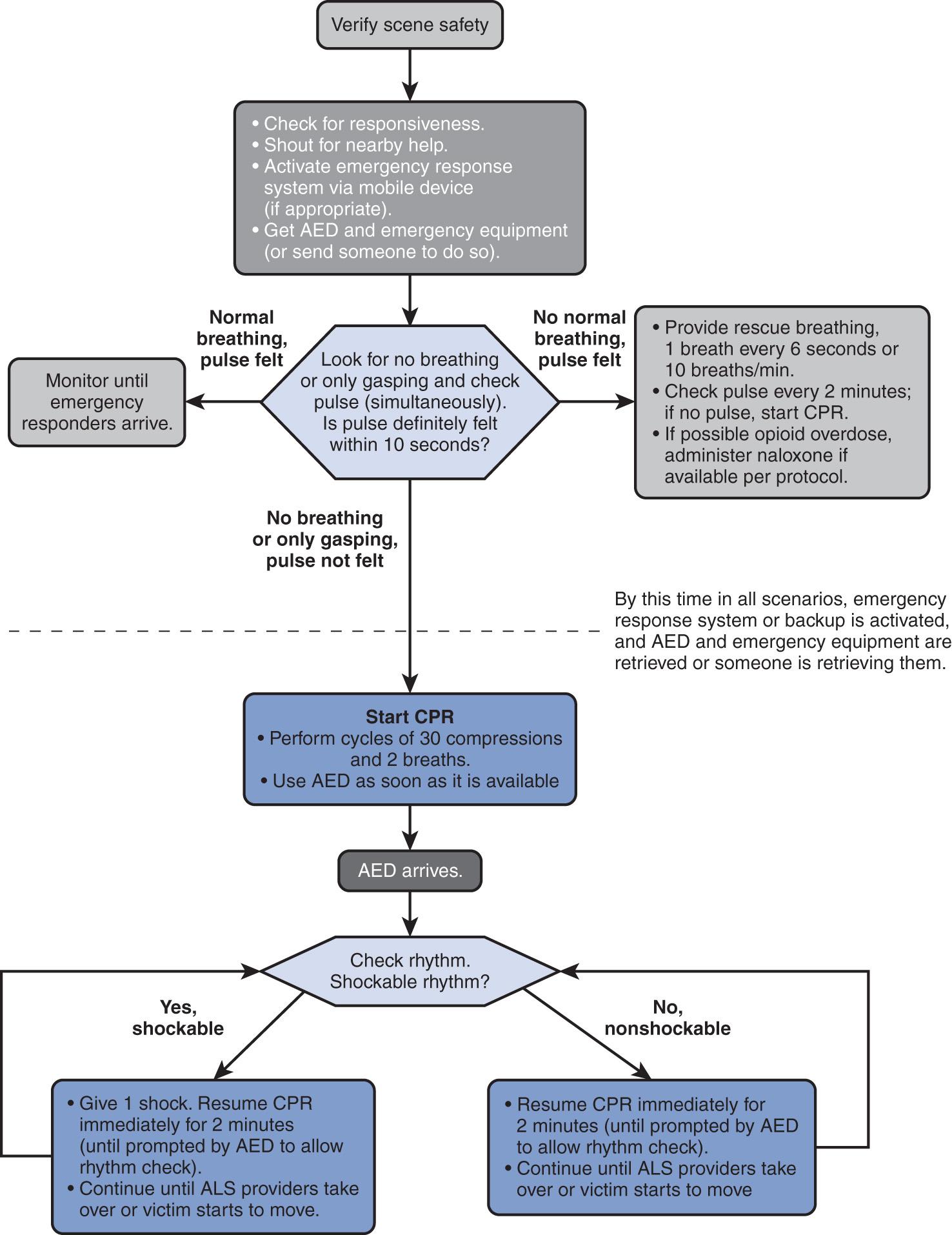Physical Address
304 North Cardinal St.
Dorchester Center, MA 02124
Activate an emergency response system and get an automated external defibrillator (AED) if available in the area and then return to the victim. If you return with an AED, turn it on and follow the prompt. If no AED is available, check for a pulse and begin cardiopulmonary resuscitation (CPR) until emergency medical services (EMS) arrive to take over. These steps are summarized in Fig. 40.1 .

According to American Heart Association (AHA) guidelines for CPR and Emergency Cardiovascular Care, chest compressions were often delayed while the rescuer opened the airway to give mouth-to-mouth breaths, retrieved a barrier device, or assembled ventilation equipment. Starting the resuscitation sequence with chest compressions reduces delay to first chest compression.
Components of high-quality CPR are given below:
Chest compression rate between 100 to 120 times per minute.
Chest compression depth at least 2 inches (50 mm) for adults and at least one-third the anteroposterior diameter of chest for children (~2 inches) and infants (~1.5 inches).
Complete chest recoil after each compression to allow the heart to fill.
Minimal interruptions in chest compressions with chest compressions occurring ≥80% of time during cardiac arrest.
Change compressor every 2 minutes (or sooner if fatigued).
Avoiding excessive ventilation.
For respiratory arrest with a perfusing cardiac rhythm, breaths should be delivered every 6 seconds for total of 10 breaths per minute.
In adults, the most common cause of airway obstruction in an unconscious patient is loss of tone in the throat muscles, leading to airway occlusion by the tongue. This may be treated by head tilt-chin lift, jaw thrust, or insertion of an oropharyngeal airway.
Opioid intoxication should be considered in a somnolent person with decreased respiratory rate and constricted (“pinpoint”) pupils. Initial management should focus on maintaining the patient’s airway and breathing by manually opening the airway as described above and providing rescue breaths as needed. Naloxone, a short-acting opioid antagonist, should be administered if available via intravenous (IV) or intramuscular (IM) routes. Additional doses may be needed if spontaneous breathing does not occur.
Biphasic defibrillators are now used at most institutions, replacing the older monophasic defibrillators. The amount of joules will often be device-specific, ranging from 120 to 200 J. If the appropriate setting is unknown, use 200 J. Additional shocks should be equivalent or higher Joules. This is in contrast to the older monophasic defibrillators, in which 360 J is recommended.
Become a Clinical Tree membership for Full access and enjoy Unlimited articles
If you are a member. Log in here